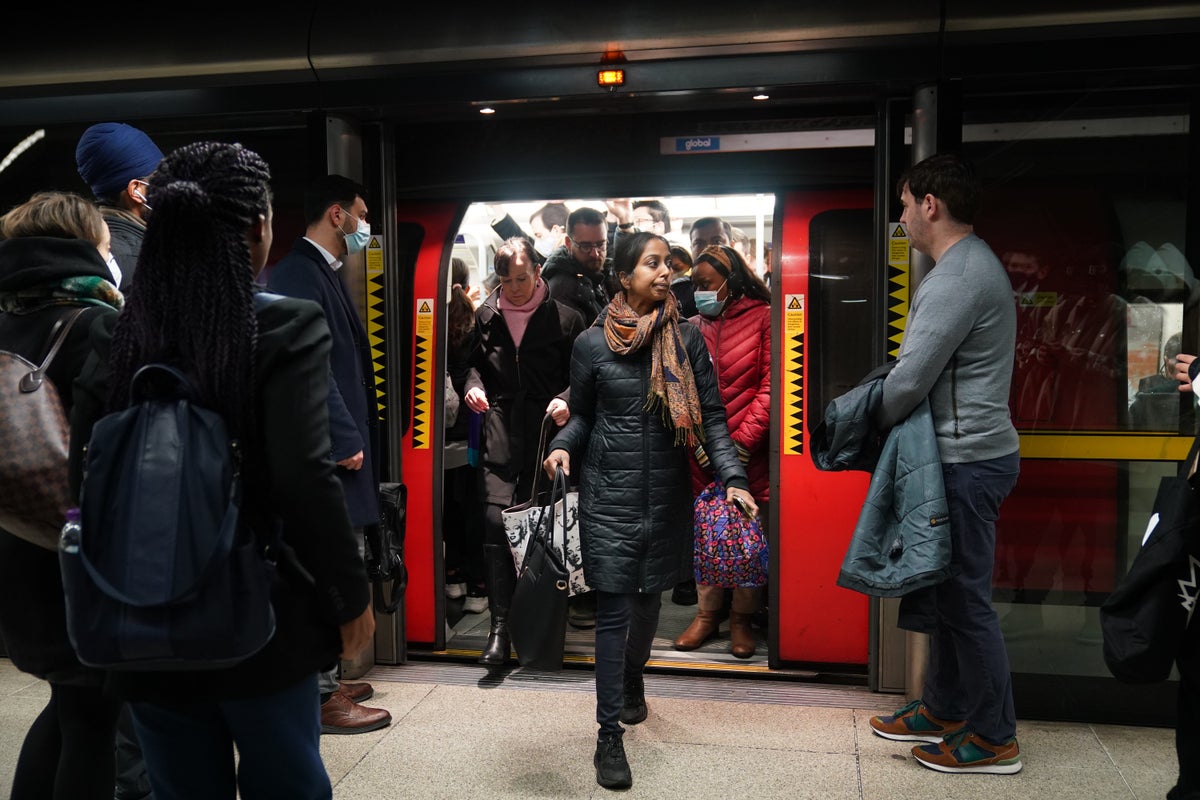
The air on London’s Tube network is polluted with metallic particles small enough to enter the human bloodstream, according to a study.
University of Cambridge researchers conducted a new type of pollution analysis using magnetism to inspect dust samples from London Underground ticket halls, platforms and train driver cabins.
The team found high levels of a type of iron oxide called maghemite.
Researchers said this suggests pollution particles are suspended for long periods due to poor ventilation, particularly on platforms.
Some of the particles had a diameter of just five nanometres, making them small enough to be inhaled and end up in passengers’ and workers’ bloodstreams.
The samples were collected in 2019 and 2021 from locations including stations such as Oxford Circus, King’s Cross St Pancras and Paddington.
Around three-and-a-half million journeys a day are made on the London Underground on weekdays.
While the researchers did not look at whether the maghemite particles pose a direct health risk, they believe their methods could be useful in future studies.
Pollution levels are normally monitored using standard air filters, which cannot capture ultrafine particles or identify particles.
We can measure particles that are small enough to be inhaled and enter the bloodstream— Professor Richard Harrison
Professor Richard Harrison from the University of Cambridge’s Department of Earth Sciences, senior author of a paper produced from the study, said: “If you’re going to answer the question of whether these particles are bad for your health, you first need to know what the particles are made of and what their properties are.
“Our techniques give a much more refined picture of pollution in the Underground.
“We can measure particles that are small enough to be inhaled and enter the bloodstream.
“Typical pollution monitoring doesn’t give you a good picture of the very small stuff.”
Our monitoring has shown that dust levels on the Tube remain well below limits set by the Health and Safety Executive, but we are going further and have developed a number of innovative new cleaning regimes— Lilli Matson, Transport for London
Transport for London’s chief safety, health and environment officer Lilli Matson said: “Safety is our top priority and we have been working for many years to improve air quality on the Tube, and will continue to do so.
“We periodically collect samples of Tube dust and analyse its content to track levels of potentially harmful materials, including iron, chromium and nickel.
“Analysis has shown that quantities of these materials are well below the legal limits in environments such as the Tube.
“Our monitoring has shown that dust levels on the Tube remain well below limits set by the Health and Safety Executive, but we are going further and have developed a number of innovative new cleaning regimes.
“This includes the use of industrial backpack dust cleaners, which are one part of our multi-million pound Tube cleaning programme.”
The research was supported in part by the European Union, the Cambridge Trust and Selwyn College, Cambridge.







